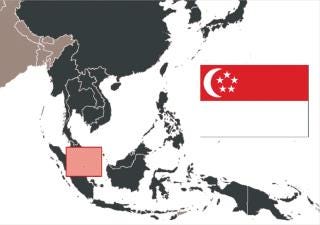SingaporeSingapore
June 1, 2011
Begin a discussion about Singapore, and most likely the word hub enters the conversation. This small country is giving a full-force effort into earning a reputation for being the technical, financial services, and industrial center of the Asia–Pacific region. Its gross domestic product (GDP) per capita (~$57,200 in 2010) is comparable with most Western developed countries. Like South Korea, India, and China, Singapore aims to grow its market share in the biosimilars sector. The difference, however, says Pete Gagnon (CSO at Validated BioSystems and resident in Singapore) is that the country is “positioned to get there faster.” He credits its position in the biopharmaceutical industry to several factors, including a sophisticated infrastructure, a young and highly educated workforce, government support of several “incubator” facilities, financial incentives (e.g., Research Incentive Schemes for Companies, RISC; and Innovation Development Scheme, IDS), and tax incentives for manufacturing.
Infrastructure Investment
Singapore and Malaysia have worked to attract international direct investment in their high-technology sectors since the 1970s. Singapore has developed and continues to develop complex telecommunications, financial services, and transportation networks (>100 airlines link it to more >200 cities in 60 countries) (1).

Figure 1: ()
Among all Asia–Pacific regions, Gagnon considers infrastructure as the limiting factor, even if a country has the benefit of skilled and experienced personnel. “Think of it this way: When you join a Genentech or an Amgen or a Biogen-IDEC as a green recruit, and you walk through the door on your first day of work, you are walking into an environment with tens of thousands of years of hands-on experience. There is no replacement for that. In China, there are many top-level executives who developed their experience in major US or European biotechs. This is undeniably of great value, but without the rest of the system, they are handicapped. Its going to take a lot of time to develop that resource. They will succeed, of course, but it will slow them down.”
INNOVATION SCORECARD
Scientific American recently ranked countries according to several factors for their capacity to support biotechnology innovation. Singapore came in second behind the United States (score of 37). By comparison, other top final scores were for Canada (29); Sweden (28); Denmark, Finland, and Israel (27); France, Iceland, The Netherlands, and Switzerland (26); and Belgium, Ireland, the United Kingdom (25).
Intellectual Property Protection: 6.98
Intensity of Biotech Activity: 1.13
Enterprise Support: 9.37
Education/Workforce: 5.94
Foundations for Biotech Innovation: 7.73
Final Score: 31
SOURCE: FRIEDMAN Y. A GLOBAL BIOTECHNOLOGY SURVEY— WORLDVIEW SCORECARD. SCIENTIFIC AMERICAN WORLDVIEW 2011; WWW.SAWORLDVIEW.COM/WORLDVIEW-SCORECARD.
Collaborations among government agencies and industry also are key factors. Public sector spending into R&D is estimated have more than doubled between 2006 and 2010 to $13.5 billion over the 2001 to 2005 period. In May 2010 at the opening of the industry conference ProcessCEMAsia, Lim Hng Kiang, minister for trade and industry, said various government agencies such as the Economic Development Board (EDB), JTC Corporation (a leading agency for planning, promoting, and developing industrial landscape to support economic advancement), and Singapore Workforce Development Agency (WDA) are partnering with the Biopharmaceutical Manufacturers’ Advisory Council. The group will further improve the infrastructure at Tuas Biomedical Park and enhance workforce productivity, manufacturing efficiency, and cost competitiveness (2). Singapore’s EDB also has developed a Strategic Attachment and Training (STRAT) initiative to increase key capabilities in the country’s workforce for emerging sectors by using overseas attachment and training with leading companies. Back to Basics to Move Forward
Singapore has a history of establishing biomedical “clusters” as important parts of its scientific network. In 2001, JTC Corporation and the Singapore government launched the 200-hectare One-North research and science park. The goal is to boost the country’s innovation and R&D efforts and encourage scientific collaboration. Singapore had previously focused mainly on applied rather than basic scientific research. “Biopolis” is a biomedical R&D complex (completed in 2006) at the One-North site. Government agencies, research laboratories for neuroscience and immunology, and publicly funded research institutes are located at the complex.
One such institute is Singapore’s Agency for Science, Technology, and Research (A*STAR), a leading organization of scientists who seek to drive and sustain scientific research through interdisciplinary collaborations. It also provides research and commercialization infrastructures as well as scholarship and training programs. A*STAR’s Biomedical Research Council (BMRC) aims to foster strength in molecular, cellular, and developmental biology; cancer genetics; stem cells and regenerative medicine; immunology and infectious disease; metabolic medicine; and biomedical engineering. BMRC research units have established various internationally competitive technological platforms to help advance scientific research. Core technological platforms include genomics and proteomics, structural biology, bioinformatics, bioimaging, and bioprocessing.
Such establishments hope to attract and retain scientific talent as well. “We have got to give scientists their oxygen to do good research,” said Lim Chuan Poh (A*STAR chairman) in a Straits Times interview. “That’s why they find the environment here very conducive. They can focus their minds and do wonderful research” (3). Whereas intellectual property (IP) concerns are prevalent in much of the Asia–Pacific region, one report ranks Singapore first in the world in terms of IP protection (4).
“In Singapore the culture sees the job as a lifelong commitment. So when you get employees, you can expect that they’ll stay with you for the long haul. This means its very worthwhile to spend resources to develop them,” says Gagnon.
QUICK FACTS
Population: ~4.7 million (global ranking: 117th)
Languages: Mandarin (35%), English (23%), Malay (14.1%), Hokkien (11.4%), Cantonese (5.7%), Teochew (4.9%), Tamil (3.2%), other Chinese dialects (1.8%)
Literacy: 92.5%
Education Spending: 3.2% of GDP (global ranking: 137th)
Business
Labor Force: 3.075 million (global ranking: 102nd); 0.1% agriculture, 30.2% industry, 69.7% services
Major Industries: electronics, chemicals, financial services, oil drilling equipment, petroleum refining, rubber products, processed food and beverages, ship repair, offshore platform construction, life sciences/>
Exports: machinery and equipment (including electronics), consumer goods, pharmaceuticals and other chemicals, mineral fuels; to Hong Kong 11.6%, Malaysia 11.5%, US 11.2%, Indonesia 9.7%, China 9.7%, Japan 4.6%
Imports: machinery and equipment, mineral fuels, chemicals, foodstuffs, consumer goods; from US 14.7%, Malaysia 11.6%, China 10.5%, Japan 7.6%, Indonesia 5.8%, South Korea 5.7%
Internet: ~992,000 hosts (global rank: 44th); 3.23 million users (global rank: 65th)
Biotechnology
R&D Tax Subsidies: ~10¢/US$ spent
Biomedical Companies: >50 companies conducting R&D, clinical research, and drug discovery, including Abbott, GlaxoSmithKline, Merck Sharp & Dohme, Novartis, Lilly, Takeda, FORMA Therapeutics, S*Bio, MerLion Pharmaceuticals, and PharmaLogicals
Industry Organization:
Singapore Association of Pharmaceutical Industries, 151 Chin Swee Road, #02-13A/14 Manhattan House, Singapore 169876; 6738 0966; fax 6738 0977; www.sapi.org.sg
Related Government Agencies:
Health Sciences Authority, 11 Outram Road, Singapore 169078; 62130838; [email protected]
Ministry of Health, College of Medicine Building,16 College Road, Singapore 169854; 65-6325-9220; www.moh.gov.sg
Getting Started
Singapore has several resources for those who are seeking to invest, including EDB Singapore (www.edb.gov.sg/edb/sg/en_uk/index/why_singapore/Guide_to_Investing_in_Singapore.html). Gagnon offers his advice: “I would counsel any Asian biopharm start-up to take the time to get it right the first time, by which I mean really sweat the details, get all the systems in place to support sustained manufacture at US GMP compliance levels. Trying to rush to market with a product that doesn’t make the grade will hold them back for a generation. We’ve see this in the United States. A company gets in the door with a good idea, it makes big promises, then fails to deliver. After that, it’s 10 times harder to get back in the door again. For any start-up that can assert the patience to prevent that mistake, it will probably take 10 years off the time it takes them to get to sustained productivity and profitability.”
Learning about the culture is beneficial as well. “The culture here is also very open, probably owing to it being a cultural crossroads to begin with, which makes it very tolerant of visitors, for example from foreign biotechs. For a point of entry, it would be hard to beat,” says Gagnon. Although one of Singapore’s official languages is English, most residents speak Chinese. However, “Anywhere you go there will be people who understand it adequately for you to do whatever needs doing without difficulty,” he says. English is also spoken fluently in the biotechnology communities. “In my view, this puts Singapore way ahead of the pack,” says Gagnon.
RECENT INDUSTRY DEVELOPMENTS
Scheduled to begin operating this year,
Lonza Biologics Tuas is located in Tuas Biomedical Park, a joint venture between Lonza and EDB’s biomedical sciences investment management unit Bio*One Capital. This biopharmaceutical production facility (at a cost of US$300 million) will be one of Singapore’s largest commercial large-scale mammalian biologics manufacturing facilities. “The design of the facility is based primarily upon that already built in Portsmouth, NH (USA), but assignments to any of the three overseas facilities as part of the STRAT program will be directly relevant to roles in Singapore,” according to Lonza. The facility includes up to four mammalian bioreactor trains, each with a capacity between 1,000 and 20,000 L and downstream purification capabilties.
In January 2010, Roche announced it would enter into a strategic alliance with Singapore’s scientific and medical institutions to set up the Roche-Singapore Hub for Translational Medicine. The $130.7-million research hub will focus on disease biology to develop personalized treatment approaches. “The powerful combination of intellectual and technological capabilities together with outstanding government commitment at the heart of this collaboration will provide a unique opportunity to drive personalized healthcare,” said Jean-Jacques Garaud, Global Head, Roche Pharma Research and Early Development.
In October 2010, Agilent Technologies Inc. opened its new life sciences instruments manufacturing facility in Singapore. The facility will produce the company’s liquid chromatography–mass spectrometry (LC–MS) instruments for the global market. “The opening of the LC/MS manufacturing facility marks a milestone in Agilent’s continued investment in Singapore, which began in 1970,” said Bill Sullivan, Agilent president and CEO.
Also in October 2010, the Biomedical Sciences (BMS) Executive Committee announced that the government would be investing S$3.7 billion in biomedical sciences research during 2011–2015. That represents a 12% increase over the government’s investment during 2006– 2010. The committee pointed out that R&D remains a priority in Singapore’s long-term strategy to boost its economic competitiveness, achieve sustained growth, and establish the country as Asia’s Innovation Capital. The investment is part of the Research, Innovation, and Enterprise 2015 (RIE2015) fund of S$16.1 billion committed to R&D for the next five years.
A*STAR’s Biomedical Sciences Executive Committee announced that the Singapore government will invest S$3.7 billion for biomedical research during 2011–2015. This value represents a 12% increase over 2006–2010.
Facing patent expirations and increased pressure from generics, Eli Lilly closes its Singapore Center for Drug Discovery in December 2010. The center was a joint collaboration with Singapore’s Economic Development Board. The company keeps open its Phase 1 clinical unit, marketing, and sales offices in Singapore.

Singapore’s natural harbor and central location attract several biopharmaceutical manufacturing businesses ()
About the Author
Author Details
Maribel Rios is managing editor of BioProcess International; [email protected].
REFERENCES
1.) Monroe, T. 2006. The National Innovations Systems of Singapore and Malaysia.
2.) Lim Hng Kiang at the Official Opening of ProcessCEMAsia 2010 2010..
3.) Chan, R. 2009.S’pore Flexes Its Muscles in Science and Technology Straits Times.
4.) 2010. The Global Competitiveness Report 2010–2011, World Economic Forum.
You May Also Like






